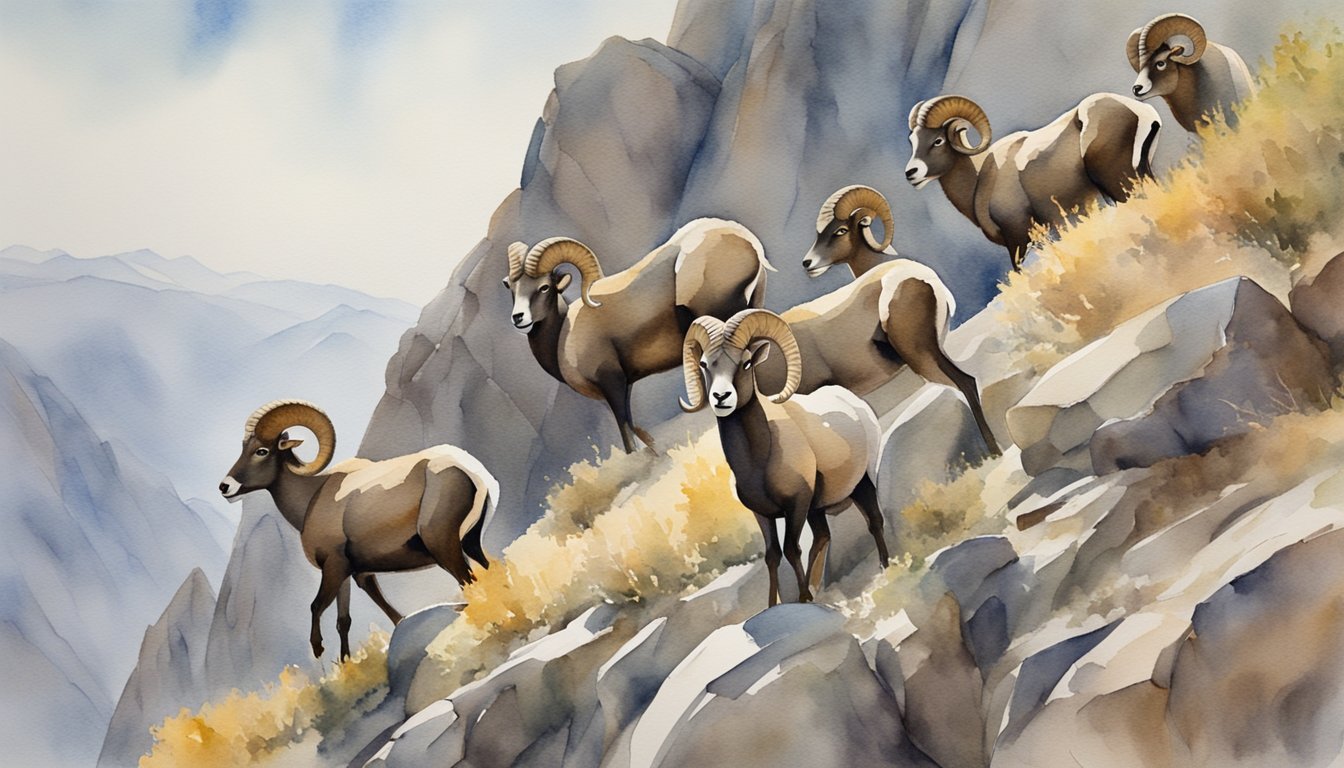Bighorn Sheep Basics

Bighorn sheep are North America’s wild treasures, known for their impressive horns and agile climbing abilities. These animals demonstrate remarkable adaptations to their environments.
Physical Characteristics
Bighorn sheep exhibit a robust and muscular frame, with males, or rams, being significantly larger than females, or ewes. Rams showcase large horns that curl back over their ears and can weigh up to 30 pounds, while the smaller horns of ewes are more slender and less curved. Adult bighorn sheep can weigh between 160 to 250 pounds, but some rams exceed 350 pounds. Their excellent vision allows them to navigate rugged terrain expertly.
Subspecies Recognition
There are several recognized subspecies of bighorn sheep; the Rocky Mountain bighorn sheep (Ovis canadensis canadensis), Sierra Nevada bighorn sheep (Ovis canadensis sierrae), and the desert bighorn sheep (Ovis canadensis nelsoni). Each subspecies varies slightly in size, color, and horn configuration, helping them adapt to different landscapes from snowy peaks to arid deserts.
Diverse Habitats
Bighorn sheep are found in a variety of habitats, including alpine meadows, grassy mountain slopes, and desert climates. They are adept at life in high altitudes and can move across sheer cliff faces with ease. Desert bighorn sheep are adapted to the hot, dry climates of the desert and can go without water for several days. Meanwhile, the Rocky Mountain and Sierra Nevada bighorn sheep navigate the rocky, mountainous terrains where they prefer cooler climates and high elevations.
Ecology and Behavior
Bighorn sheep have adapted remarkably well to the rugged terrain and fluctuating climates of their habitats in North America. From the high mountains to the arid deserts, their diverse behaviors and ecological roles demonstrate a complex interaction with the environment.
Reproduction and Lifecycle
Bighorn sheep mating, known as the rut, occurs in the fall with much competition among males for the right to breed. Dominant males engage in battles to establish a dominance hierarchy, ensuring access to females for mating. Following a gestation period of about six months, ewes give birth, typically to a single lamb, in the late spring.
Social Structure and Diet
Bighorn sheep live in segregated herds — one for males and another for females and lambs. Their diet mainly consists of a variety of grasses, shrubs, and plants adapted to the dry, mountainous environment. Males rejoin the female groups during the breeding season.
Conservation Status
Due to diseases like pneumonia and exposure to domestic livestock, the populations of bighorn sheep have faced significant declination, resulting in some subspecies being listed as endangered. Conservation efforts include habitat protection, careful management, and disease mitigation to support recovery and prevent extinction. Various subspecies, such as the desert bighorn and Rocky Mountain bighorn, face different levels of threat depending upon their geographic location and specific environmental pressures.

